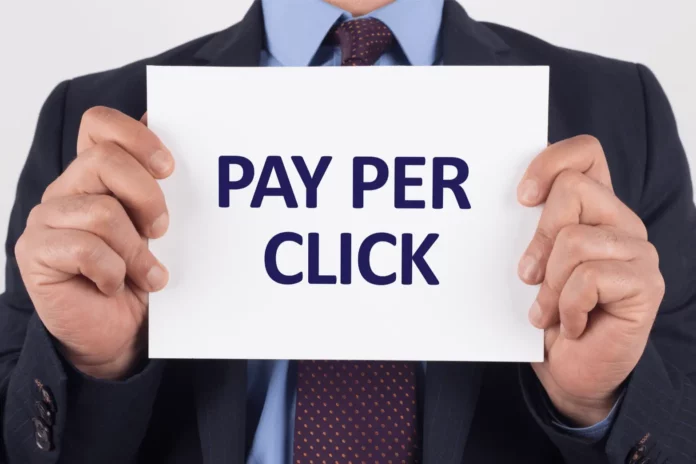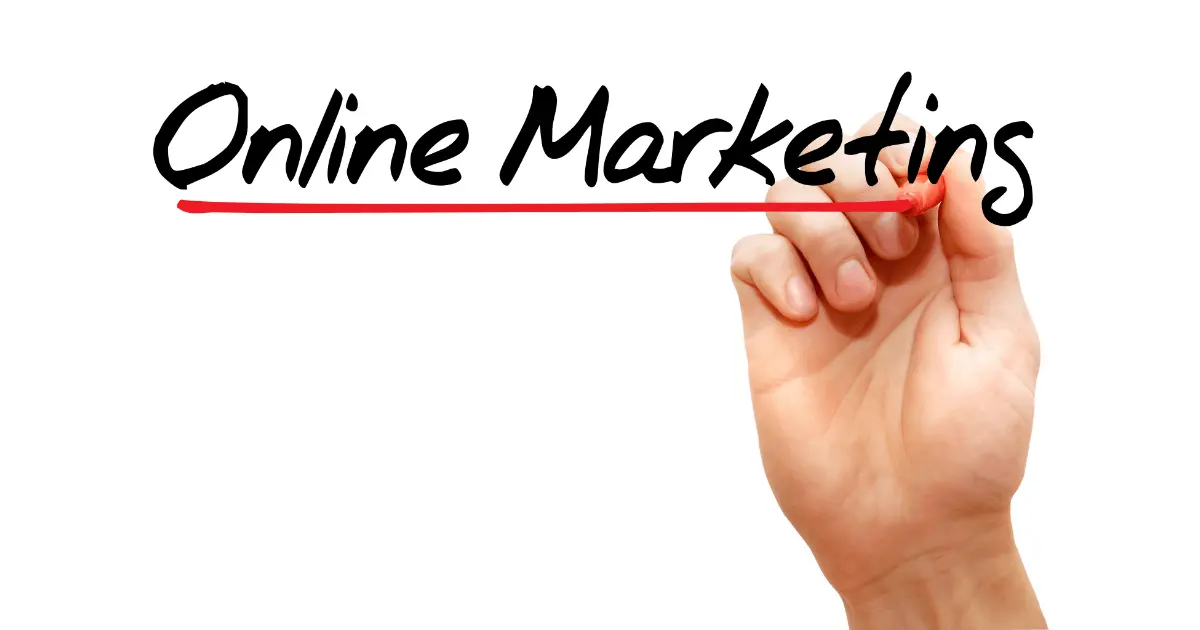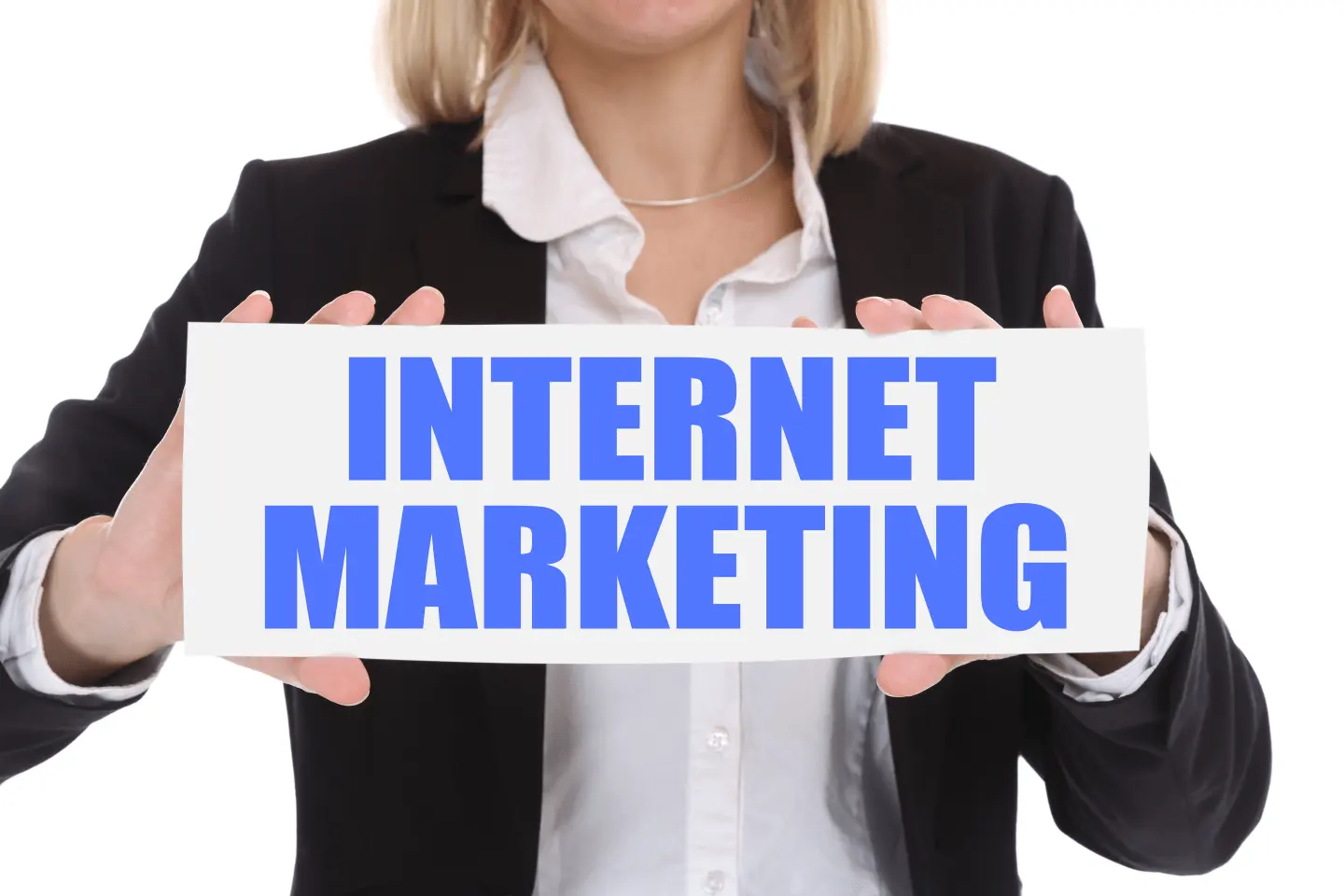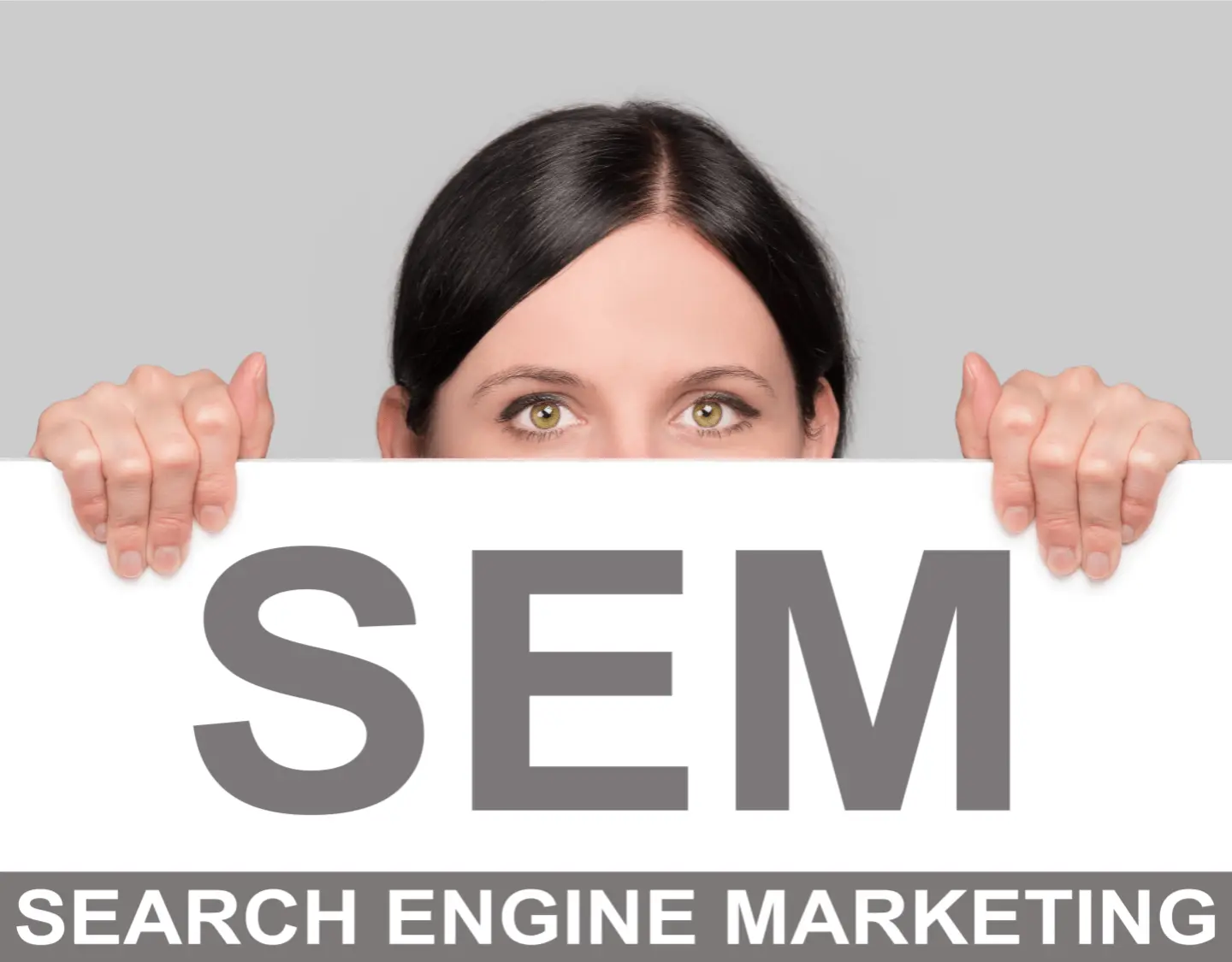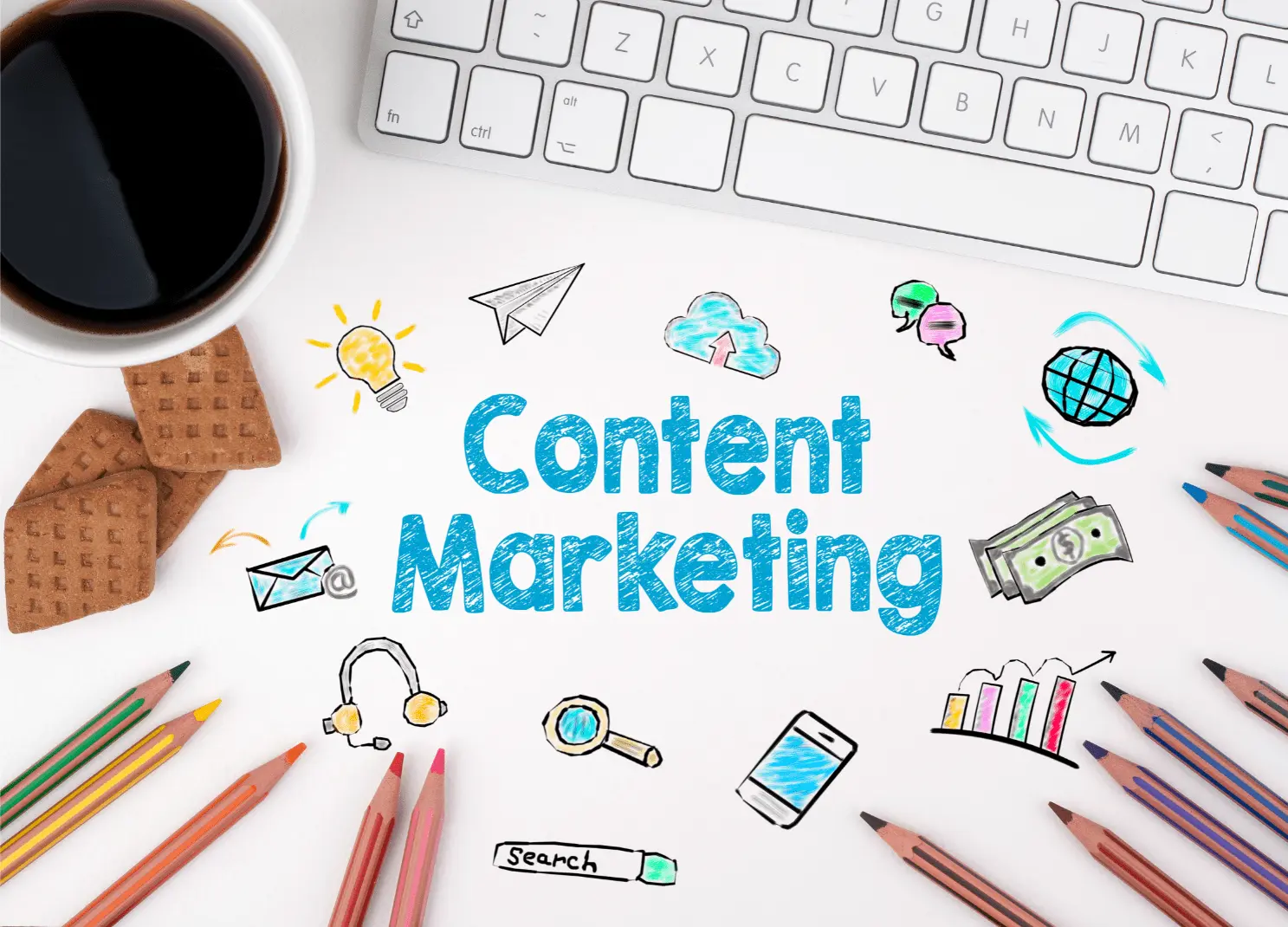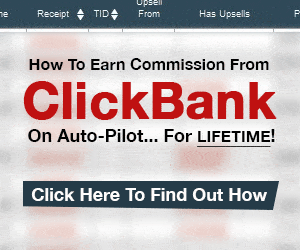In the field of online advertising, pay-per-click marketing (PPC) has emerged as a dynamic and results-driven strategy, taking businesses to the forefront of digital visibility.
Understanding the intricacies of PPC advertising is essential for marketers and business owners to understand the competitive landscape of paid online promotion.
This article takes an in-depth exploration of PPC marketing, highlighting its fundamentals, types, benefits, drawbacks, and emerging trends.
Whether you’re an experienced digital marketer adapting to the ever-changing online ecosystem or a business owner looking to maximize your online presence, this article on PPC aims to provide actionable insights into the power of targeted, cost-effective advertising.
By the end of this article, you’ll not only understand the fundamentals of pay-per-click advertising but also have practical strategies to leverage its potential for traffic, conversions, and measurable success in the digital advertising arena.
What Is PPC?
PPC stands for Pay-Per-Click, a digital advertising model where advertisers pay a fee each time their ad is clicked.
It’s a method used to direct traffic to websites, and it’s often associated with search engine advertising.
Advertisers bid on keywords relevant to their target audience, and when users search for those terms, the ads appear prominently in search engine results.
PPC campaigns operate on a bidding system, where ad placement is determined by bid amount, ad quality, and relevance.
This model allows businesses to reach a targeted audience, control ad spend, and track the effectiveness of their campaigns through metrics like clicks, impressions, and conversions.
How Does PPC Advertising Work?
PPC (Pay-Per-Click) advertising functions as a model where advertisers bid on specific keywords relevant to their target audience.
When users conduct searches using these keywords, ads appear prominently in the search engine results pages (SERPs).
Ad placement is determined through a combination of bid amount and ad quality score, calculated based on relevance, click-through rates, and landing page experience.
Each time a user clicks on the ad, the advertiser incurs a fee.
The effectiveness of a PPC campaign hinges on strategic keyword selection, compelling ad copy, and landing page relevance.
Advertisers have control over their budget, setting maximum bids and daily spending limits.
Additionally, PPC platforms provide comprehensive analytics, offering insights into campaign performance, click-through rates, conversions, and ROI.
This data allows advertisers to refine strategies, adjust bids, and optimize ad content to maximize the impact of their PPC campaigns and achieve specific marketing goals.
What Are The Types Of PPC Ads?
Here are some popular types of PPC ads:
1. Search Ads.
Search ads are the most common type of PPC ads and appear on search engine results pages (SERPs) like Google, Bing, or Yahoo.
These ads are text-based and typically displayed at the top or bottom of search results, marked as ‘sponsored’ or ‘ad.’
They operate on a pay-per-click model, where advertisers bid on keywords relevant to their target audience.
When users search for specific keywords, these ads appear based on the bid amount and ad quality.
The key to effective search ads is crafting compelling ad copy that includes relevant keywords and a strong call-to-action (CTA).
Advertisers can customize ad extensions, such as site links, callouts, or location information, to enhance visibility and provide additional information to users.
Search ads are highly targeted, reaching users actively searching for products or services, making them an efficient way to drive immediate traffic and conversions.
2. Display Ads.
Display ads are visual advertisements that appear on websites within the Google Display Network (GDN) or other ad networks.
Unlike search ads, display ads use images, videos, or interactive elements to capture users’ attention while they browse different websites.
These ads can be in the form of banners, rich media ads, responsive ads, or native ads and are placed strategically on websites relevant to the advertiser’s target audience.
Display ads leverage contextual targeting, demographics, interests, and remarketing to reach potential customers.
They aim to create brand awareness, engage users, and drive traffic to the advertiser’s website.
Display ads offer flexibility in terms of creative elements and targeting options, allowing advertisers to showcase products or services visually and reach a broader audience across the web.
3. Social Media Ads.
Social media ads are paid advertisements displayed on various social media platforms like Facebook, Instagram, Twitter, LinkedIn, and Pinterest.
These ads utilize the extensive user data available on social media platforms to target specific demographics, interests, behaviors, and custom audiences.
Social media ads come in various formats, including image ads, video ads, carousel ads, slideshow ads, and sponsored posts.
They blend seamlessly into users’ feeds or timelines, allowing advertisers to engage with users in a more native and non-disruptive manner.
Advertisers can create highly targeted campaigns, leverage advanced targeting options, and utilize social media analytics to track performance and optimize ad campaigns.
Social media ads are effective for building brand awareness, driving engagement, generating leads, and increasing conversions through targeted and visually appealing content.
4. Remarketing/Retargeting Ads.
Remarketing or retargeting ads are a strategic form of PPC advertising that targets users who have previously visited a website or interacted with specific content but haven’t completed a desired action, such as completing a purchase or filling out a form.
These ads aim to re-engage users and bring them back to the website by displaying tailored ads across the web or social media platforms.
Remarketing ads use cookies or tracking pixels to track user behavior and display relevant ads based on their previous interactions.
They serve as gentle reminders to users, reinforcing brand awareness and encouraging them to take action.
Remarketing ads often have higher conversion rates as they target users who have already shown interest in the advertiser’s offerings.
5. Video Ads.
Video ads have gained immense popularity and effectiveness in PPC advertising, offering engaging and immersive content to users across various platforms like YouTube, social media, and other video-centric websites.
These ads come in various formats, including in-stream ads that play before, during, or after the video content, as well as out-stream ads displayed within non-video content.
Video ads can be skippable or non-skippable, providing advertisers with options to tailor their approach based on audience preferences.
They leverage visual storytelling, motion, sound, and compelling narratives to capture users’ attention and convey messages effectively.
Advertisers can target specific demographics, interests, or behaviors to reach their intended audience, making video ads versatile for various marketing objectives like brand awareness, product showcases, tutorials, testimonials, and storytelling.
Additionally, the ability to measure engagement metrics such as view duration, click-through rates, and conversions allows advertisers to optimize their campaigns and tailor content for better performance.
Video ads provide an excellent opportunity for brands to create impactful and memorable experiences, fostering deeper connections with their target audience.
What Are The Benefits Of PPC Advertising?
Here are some advantages of PPC marketing:
1. Targeted Reach and Precision.
PPC advertising offers unparalleled targeting capabilities, allowing advertisers to reach their desired audience with precision.
With PPC, advertisers can target specific demographics, geographic locations, interests, behaviors, and even device types.
This granular targeting ensures that ads are displayed to the most relevant audience, increasing the likelihood of engagement and conversion.
For instance, businesses can tailor their ads to appear only to users within a certain age group or those searching for specific keywords related to their products or services.
This level of targeting not only maximizes the efficiency of ad spend but also enhances the overall ROI (Return on Investment) by reaching potential customers who are more likely to convert.
The ability to adjust targeting parameters in real-time based on performance metrics further optimizes campaigns for better results.
2. Cost-Effectiveness and Measurable Results.
One of the significant advantages of PPC advertising is its cost-effectiveness and the ability to measure results accurately.
Unlike traditional advertising methods where advertisers pay a fixed cost regardless of performance, PPC operates on a pay-per-click model, meaning advertisers only pay when users click on their ads.
This pay-per-click structure ensures that advertisers pay solely for the traffic generated, making it a more cost-effective method as the budget is allocated to actual user engagement.
Additionally, PPC platforms provide robust analytics and tracking tools that offer comprehensive insights into ad performance, including click-through rates, conversions, and ROI.
These detailed metrics enable advertisers to measure the effectiveness of their campaigns accurately.
With access to real-time data, advertisers can make informed decisions, optimize campaigns, and allocate budgets to high-performing keywords or demographics, maximizing the impact of their advertising spend.
3. Flexibility and Quick Results.
PPC advertising offers unparalleled flexibility, allowing advertisers to create, launch, and modify campaigns quickly.
Unlike traditional marketing methods that often require long lead times, PPC campaigns can be set up and launched within a short span, enabling businesses to react swiftly to market changes or seasonal trends.
Moreover, the flexibility extends to ad customization, where advertisers can experiment with various ad formats, copy, visuals, and landing pages to test what resonates best with their audience.
This A/B testing allows for constant refinement and optimization, ensuring that campaigns are continuously improved for better performance.
Additionally, PPC platforms offer options for ad scheduling, enabling advertisers to display their ads at specific times of the day when their target audience is most active, further enhancing campaign efficiency and driving quicker results.
4. Enhanced Brand Visibility and Control.
PPC advertising grants businesses greater control over their brand visibility in search engine results and across various digital channels.
With PPC, advertisers can bid on specific keywords related to their industry, ensuring that their brand appears prominently when users search for those terms.
This visibility not only increases brand awareness but also positions the brand in front of potential customers actively seeking related products or services.
Moreover, PPC platforms allow advertisers to create compelling ad copy and visuals, enabling them to craft a consistent brand message and maintain control over how their brand is portrayed to the audience.
This control extends to budget management, where advertisers can set daily or campaign-specific budgets, ensuring that ad spending aligns with business goals and constraints.
5. Scalability and Targeted Campaigns.
PPC advertising offers scalability, accommodating businesses of all sizes and budgets.
Whether a business is a small startup or an established enterprise, PPC platforms allow for scalability in terms of budget allocation and campaign scope.
Advertisers can start with modest budgets and gradually scale up as they see positive results and ROI, making it accessible for businesses with varying financial capacities.
Additionally, PPC allows for the creation of highly targeted campaigns, focusing on specific niches, products, or services.
This targeted approach enables businesses to tailor messages to segmented audiences, increasing relevance and engagement.
Advertisers can create multiple ad groups or campaigns targeting different customer segments, ensuring that each campaign is optimized for maximum impact within its specific audience, contributing to higher conversion rates and improved results.
6. Real-Time Performance Tracking and Optimization.
One of the most advantageous aspects of PPC advertising is the ability to track performance metrics in real-time and make immediate adjustments for optimization.
PPC platforms provide comprehensive dashboards and analytics tools that offer detailed insights into ad performance, including impressions, clicks, conversions, and cost per acquisition.
This real-time data empowers advertisers to identify underperforming keywords, ad copies, or targeting parameters quickly.
Armed with this information, advertisers can refine campaigns, pause underperforming ads, tweak bidding strategies, or adjust targeting criteria to maximize results.
The agility to react promptly to changing trends or audience behavior ensures that campaigns remain dynamic and competitive in the fast-paced digital landscape, ultimately driving better outcomes and higher returns on advertising investments.
7. Immediate Visibility and Quick Entry.
PPC offers businesses the opportunity for immediate visibility and rapid entry into the market.
Unlike some forms of digital marketing that require time for organic growth or content to gain traction, PPC ads can appear on search engines or relevant websites as soon as the campaign goes live.
This instant visibility allows businesses to bypass the waiting period often associated with SEO strategies and immediately target potential customers who are actively searching for products or services, resulting in quicker exposure and potential conversions.
8. Geotargeting and Localized Campaigns.
PPC advertising enables precise geotargeting, allowing businesses to tailor their ads to specific geographical locations.
This capability is particularly advantageous for local businesses looking to target audiences within a certain radius of their physical locations.
Through geotargeting, advertisers can ensure that their ads are shown only to users in designated areas, increasing the relevance of the ads and maximizing the chances of attracting local customers.
Whether it’s a small boutique, restaurant, or service-based business, PPC allows for the creation of hyper-localized campaigns, reaching potential customers in proximity and driving foot traffic or conversions from a specific geographic region.
9. Experimentation and Data-Driven Insights.
PPC advertising provides an excellent platform for experimentation and data-driven insights.
Advertisers can test different ad formats, headlines, visuals, or calls-to-action to determine which elements resonate best with their audience.
This A/B testing methodology allows for continuous improvement by leveraging data-driven insights.
By analyzing the performance metrics of different ad variations, advertisers can make informed decisions about refining their campaigns for maximum effectiveness.
These insights not only optimize current campaigns but also inform future marketing strategies, ensuring that each iteration is more tailored and impactful based on the evolving preferences and behaviors of the target audience.
What Are The Drawbacks Of PPC Advertising?
Here are some disadvantages of PPC marketing:
1. Costly Competition and Click Fraud.
One of the primary drawbacks of PPC advertising is the competitive nature of bidding for ad placement.
Popular keywords or high-demand advertising spaces often lead to increased bidding competition among advertisers, consequently driving up the cost per click (CPC).
This can make PPC campaigns expensive, especially for small businesses with limited advertising budgets.
Moreover, the competitive landscape may result in diminished visibility or reduced ad exposure for advertisers with smaller budgets, impacting their ability to compete effectively.
Additionally, click fraud remains a concern in PPC campaigns.
Click fraud involves malicious or automated clicking on ads to drain an advertiser’s budget without genuine user interest.
Fraudulent clicks inflate costs, decrease ROI, and undermine the effectiveness of PPC campaigns.
Advertisers need to employ stringent measures and monitoring tools to combat click fraud and ensure ad spend efficiency.
2. Ad Blindness and Ad Fatigue.
Another drawback of PPC advertising is the phenomenon of ad blindness and ad fatigue among online users.
Ad blindness refers to the tendency of users to ignore or overlook ads consciously or subconsciously due to repeated exposure or their placement on web pages.
This results in diminishing returns on ad spending as users become adept at filtering out ads.
Ad fatigue occurs when users are repeatedly exposed to the same or similar ads, leading to a decline in engagement and click-through rates.
Advertisers must constantly refresh ad creatives, optimize targeting strategies, and rotate ad placements to combat ad blindness and fatigue.
Failing to address these issues can result in decreased ad performance, reduced conversion rates, and a lower return on investment (ROI) for PPC campaigns.
3. Limited Long-Term Benefits and Dependency.
PPC advertising, while effective in driving immediate traffic and generating quick results, often lacks long-term benefits compared to other marketing strategies like content marketing or SEO.
The moment advertisers stop funding PPC campaigns, the flow of traffic also diminishes, highlighting the dependency on continuous ad spend for sustained results.
Unlike organic search engine optimization (SEO) efforts that can yield lasting results and organic traffic over time, PPC operates on a pay-to-play model, offering instant visibility but without the longevity of organic strategies.
This dependency on continuous investment in PPC advertising can be financially burdensome, especially for businesses with fluctuating budgets or seeking sustainable, long-term growth.
4. Complexity and Learning Curve.
PPC advertising platforms, such as Google Ads or Bing Ads, often come with a steep learning curve and complexities that can be challenging for newcomers.
Managing PPC campaigns involves understanding bidding strategies, keyword research, ad copy optimization, targeting options, and analytics interpretation.
Navigating these platforms efficiently requires continuous monitoring, adjustments, and optimization to achieve desired results.
The complexities involved can overwhelm inexperienced advertisers, leading to suboptimal campaign performance or inefficient use of ad budgets.
Additionally, the dynamic nature of PPC platforms, frequent algorithm changes, and evolving best practices necessitate ongoing learning and adaptation, adding to the challenge for advertisers to maintain effective campaigns.
5. Ad Blocking and Privacy Concerns.
The proliferation of ad-blocking software and users’ growing concerns about privacy pose challenges for PPC advertisers.
Ad blockers prevent ads from being displayed to users, diminishing the reach and effectiveness of PPC campaigns.
As more users adopt ad-blocking technologies to enhance their browsing experiences and protect their privacy, advertisers face limitations in reaching their target audience through traditional PPC methods.
Moreover, privacy concerns related to data collection and targeted advertising have led to regulatory changes and increased user awareness.
Advertisers need to navigate these concerns by respecting user privacy, offering value-driven ad content, and exploring alternative strategies that align with user preferences while maintaining advertising effectiveness.
How To Start PPC Advertising?
Here are the steps to start PPC marketing:
1. Define Clear Goals and Objectives.
Before diving into pay-per-click advertising, it is important to define clear goals and objectives.
Determine what you aim to achieve with your PPC campaigns—whether it’s driving website traffic, increasing sales, generating leads, or raising brand awareness.
Understanding your objectives helps in crafting targeted and effective campaigns aligned with your business goals.
Set specific and measurable key performance indicators (KPIs) to track the success of your PPC efforts.
For instance, if your goal is to increase sales, your KPIs might include conversion rates, return on ad spend (ROAS), or cost per acquisition (CPA).
Establishing these goals provides a roadmap for your PPC strategy, guiding decisions on budget allocation, targeting, ad creatives, and campaign optimization.
2. Conduct Thorough Keyword Research.
Keyword research forms the foundation of successful PPC campaigns.
Identify relevant keywords and phrases that are related to your company, products, or services.
Use tools like Google Keyword Planner, SEMrush, or Ahrefs to explore keywords relevant to your industry, considering factors like search volume, competition, and user intent.
Focus on long-tail keywords that are more specific and more likely to drive high-quality traffic.
Group keywords into themed ad groups to maintain relevancy and improve ad performance.
Additionally, incorporate negative keywords—terms you don’t want your ads to show for—to refine targeting and ensure your ads reach the most relevant audience.
Thorough keyword research lays the groundwork for creating compelling ad copy and optimizing your campaigns for better performance.
3. Craft Compelling Ad Copy and Creative.
Once you’ve identified relevant keywords, the next step is to create compelling ad copy and creative elements.
Write concise, engaging, and persuasive ad copy that resonates with your target audience and aligns with the keywords you’ve chosen.
Highlight unique selling propositions (USPs), promotions, or any incentives to entice clicks.
Test different ad copy variations to see what works best for your target audience.
Additionally, visuals play a significant role in PPC advertising, especially for platforms like Google Display Network or social media ads.
Design eye-catching and relevant imagery or videos that complement your ad copy and attract attention.
A/B testing different ad creatives helps determine which elements drive better performance and improve click-through rates (CTRs) and conversions.
4. Set Up Conversion Tracking and Analytics.
Conversion tracking is crucial for measuring the success of your PPC campaigns.
Implement conversion tracking tools like Google Analytics or platform-specific tracking codes to monitor user actions after they click on your ads, such as form submissions, purchases, or sign-ups.
Set up conversion tracking for different conversion points on your website to gain insights into the effectiveness of your campaigns.
Analyze metrics like conversion rates, click-through rates, cost per click (CPC), and return on investment (ROI) to optimize campaigns and allocate budgets effectively.
Regularly monitor performance metrics and make data-driven adjustments to improve campaign outcomes.
5. Optimize Landing Pages and User Experience.
The landing page experience plays a crucial role in converting PPC traffic into leads or customers.
Ensure that your landing pages are optimized for the user journey and aligned with the ad’s messaging and intent.
Design clear and compelling landing pages that provide relevant information, a strong call-to-action (CTA), and a user-friendly layout.
Optimize landing pages for speed, mobile responsiveness, and easy navigation to enhance the user experience.
Conduct A/B testing on landing pages to determine which elements drive higher conversions.
Continuously refine and improve landing pages based on user behavior and performance metrics to maximize the effectiveness of your PPC campaigns.
6. Select Relevant Targeting Options.
Effective targeting is key to reaching the right audience with your PPC ads.
Various targeting options are available across different platforms, allowing you to narrow down your audience based on demographics, interests, behaviors, location, and more.
Utilize these targeting features to ensure your ads are shown to the most relevant audience likely to engage with your offerings.
Refine your targeting by analyzing audience insights, testing different targeting parameters, and adjusting based on performance data.
Tailoring your targeting parameters ensures your ads reach the right people, maximizing the impact of your PPC campaigns.
7. Monitor, Test, and Iterate.
Continuous monitoring, testing, and iteration are essential components of successful PPC advertising.
Regularly monitor the performance of your campaigns across different metrics, including click-through rates, conversion rates, and ROI.
Analyze the data to identify areas for improvement and test various elements of your campaigns—keywords, ad copy, creatives, landing pages, and targeting—to optimize performance further.
Implement incremental changes based on data-driven insights rather than making drastic adjustments.
A/B testing different variables allows you to identify what resonates best with your audience and fine-tune your campaigns for better results.
8. Manage Budgets and Bidding Strategies.
Managing budgets effectively is crucial in PPC advertising to maximize returns and control costs.
Set realistic budgets aligned with your advertising goals and track spending to ensure you stay within your allocated limits.
Experiment with different bidding strategies—such as manual CPC, automated bidding, or target CPA (cost per acquisition)—to find the most effective approach for your campaigns.
Adjust bids based on performance data, allocating more budget to high-performing campaigns or keywords to drive better results.
9. Stay Informed and Adapt to Changes.
The digital advertising landscape, including PPC, is continuously evolving.
Stay informed about industry trends, platform updates, and changes in algorithms or policies that might impact your PPC campaigns.
Join forums, attend webinars, and follow industry publications to stay updated with the latest advancements and best practices in PPC advertising.
Being adaptable and willing to adjust your strategies based on market shifts and technological advancements will help you stay ahead in the competitive landscape of digital advertising.
10. Seek Professional Guidance and Training.
For those new to PPC advertising or looking to enhance their skills, seeking professional guidance or training can be immensely beneficial.
Consider investing in courses, workshops, or certifications offered by reputable institutions or digital marketing experts.
These resources provide valuable insights, strategies, and hands-on experience to navigate the complexities of PPC advertising effectively.
Additionally, consulting with PPC specialists or agencies can offer tailored strategies and expert guidance to optimize your campaigns and achieve better results.
What are the top PPC advertising platforms?
Here are some popular PPC marketing platforms:
1. Google Ads (formerly Google AdWords).
Google Ads stands out as one of the most powerful and widely used PPC advertising platforms.
It enables advertisers to create highly targeted ads that appear on Google’s search engine results pages (SERPs), partner websites, and across the Google Display Network.
The platform provides robust targeting options, allowing advertisers to reach specific demographics, locations, interests, and even target users based on their search intent.
Google Ads operates on a pay-per-click model, where advertisers bid on keywords, and they pay when users click on their ads.
Its analytics and reporting tools offer in-depth insights into campaign performance, allowing advertisers to optimize their campaigns for better results.
The versatility and reach of Google Ads make it a go-to platform for businesses aiming to reach a broad audience and drive targeted traffic to their websites.
2. Facebook Ads.
Facebook Ads, offered through the Facebook Ads Manager platform, is another dominant player in the PPC advertising realm, especially for businesses targeting specific demographics and interests.
With access to a massive user base across Facebook, Instagram, and partner networks, Facebook Ads allows advertisers to create diverse ad formats, including image, video, carousel, and slideshow ads.
The platform’s targeting options are robust, enabling advertisers to reach users based on demographics, interests, behaviors, and even target custom audiences or lookalike audiences based on existing customer data.
Additionally, Facebook Ads offer detailed analytics and insights, empowering advertisers to track campaign performance and make data-driven optimizations.
Its dynamic and visually appealing ad formats make it a preferred choice for businesses aiming to engage with users on social media platforms.
3. Microsoft Advertising (formerly Bing Ads).
Microsoft Advertising, formerly known as Bing Ads, is a PPC advertising platform that operates on Microsoft’s search engine, Bing, and its partner networks, including Yahoo.
While its reach is smaller compared to Google, Microsoft Advertising offers unique opportunities for advertisers to target an audience that might be overlooked on other platforms.
The platform provides similar features to Google Ads, including keyword targeting, bid adjustments, and audience targeting based on demographics and user intent.
Advertisers can leverage Microsoft Advertising to reach users who prefer using Bing as their primary search engine or target specific demographics that might be more prevalent in Microsoft’s network.
4. Twitter Ads.
Twitter Ads is a PPC advertising platform that allows advertisers to promote their tweets, profiles, or even trends to reach a targeted audience on the Twitter platform.
The platform offers various ad formats, including promoted tweets, promoted accounts, and promoted trends.
Advertisers can target users based on interests, demographics, keywords, or even target followers of specific accounts.
Twitter’s advertising platform provides robust analytics and reporting tools, enabling advertisers to track performance metrics and optimize their campaigns for better engagement and conversions.
Its real-time nature and ability to engage with trending topics make Twitter Ads suitable for businesses aiming to drive engagement and brand awareness within the Twitter community.
5. LinkedIn Ads.
LinkedIn Ads caters primarily to a professional audience, making it an ideal platform for B2B (business-to-business) advertisers.
With options to create sponsored content, text ads, or message ads, LinkedIn Ads allows advertisers to target users based on job titles, industries, company sizes, skills, and more.
Advertisers can leverage LinkedIn’s platform to reach decision-makers and professionals within specific industries or organizations.
The platform’s analytics and reporting tools provide insights into ad performance, enabling advertisers to refine their targeting and messaging for better results.
LinkedIn Ads’ focus on professional networking and business-oriented content makes it a valuable platform for businesses aiming to connect with a professional audience and drive leads or conversions within the B2B space.
6. Instagram Ads.
Instagram Ads, integrated with Facebook’s advertising platform, provides a visually immersive experience for advertisers looking to engage with a younger and visually oriented audience.
With a focus on image and video content, Instagram Ads allow advertisers to create compelling visual campaigns that seamlessly integrate into users’ feeds and stories.
Advertisers can target users based on demographics, interests, and behaviors, leveraging the extensive user data available through the Facebook Ads Manager.
Instagram’s popularity among younger demographics and its visually-driven content make it an excellent choice for businesses in industries like fashion, beauty, travel, and lifestyle.
7. Pinterest Ads.
Pinterest Ads cater to a unique audience, primarily consisting of users seeking inspiration and ideas for various topics such as home decor, fashion, recipes, and more.
Pinterest’s advertising platform enables businesses to promote their products or services through Pins, which can include images, videos, and links to external websites.
Advertisers can target users based on interests, keywords, demographics, and even target users who have engaged with their brand on the platform.
Pinterest Ads are particularly effective for businesses in industries related to creativity, DIY, and lifestyle, as users often turn to the platform for inspiration and planning.
8. Snapchat Ads.
Snapchat Ads target a younger, more dynamic audience, making it an appealing platform for advertisers looking to engage with the millennial and Gen Z demographic.
The platform offers various ad formats, including Snap Ads, Story Ads, and Filters, allowing businesses to create interactive and engaging campaigns.
Snapchat’s unique features, such as augmented reality (AR) filters and lenses, provide innovative ways for advertisers to connect with users.
Advertisers can target users based on demographics, interests, and even retarget users who have interacted with their previous ads.
Snapchat Ads are ideal for brands seeking to tap into the creativity and trend-setting behaviors of younger audiences.
9. Quora Ads.
Quora Ads offer a unique opportunity for advertisers to reach a highly engaged audience seeking answers and information on various topics.
As a question-and-answer platform, Quora allows advertisers to target users based on the topics they are interested in or questions they are actively seeking answers to.
Advertisers can create text-based ads with links to their websites, promoting products, services, or informational content.
Quora’s platform provides detailed analytics, allowing advertisers to understand how their ads are performing and refine their targeting strategies.
This platform is particularly effective for businesses aiming to position themselves as industry experts and provide valuable information to an inquisitive audience.
10. Amazon Advertising.
Amazon Advertising is a powerful PPC platform that caters specifically to e-commerce businesses.
With a massive user base of shoppers actively searching for products, Amazon Ads allow advertisers to promote their products in search results, on product pages, and even within Amazon’s extensive advertising network.
Advertisers can leverage various ad types, including Sponsored Products, Sponsored Brands, and Sponsored Display Ads, to reach users at different stages of the buyer’s journey.
Amazon’s robust targeting options enable advertisers to target users based on search terms, shopping behavior, and demographics.
For e-commerce businesses, Amazon Advertising is an essential platform to increase product visibility, drive sales, and compete effectively within the Amazon marketplace.
Conclusion.
PPC (Pay-Per-Click) advertising emerges as a pivotal force in the digital marketing realm, providing businesses with a targeted and measurable approach to drive online visibility.
As explored in this article, PPC empowers advertisers to control costs, analyze performance, and precisely target their desired audience.
In an era dominated by online competition, mastering the art of strategic bidding, compelling ad copy, and continuous optimization is imperative.
The effectiveness of PPC campaigns lies in their adaptability and real-time feedback, making them an indispensable tool for businesses seeking immediate and measurable results.
Harnessing the power of PPC ensures a competitive edge and a calculated return on investment in the dynamic landscape of online advertising.


